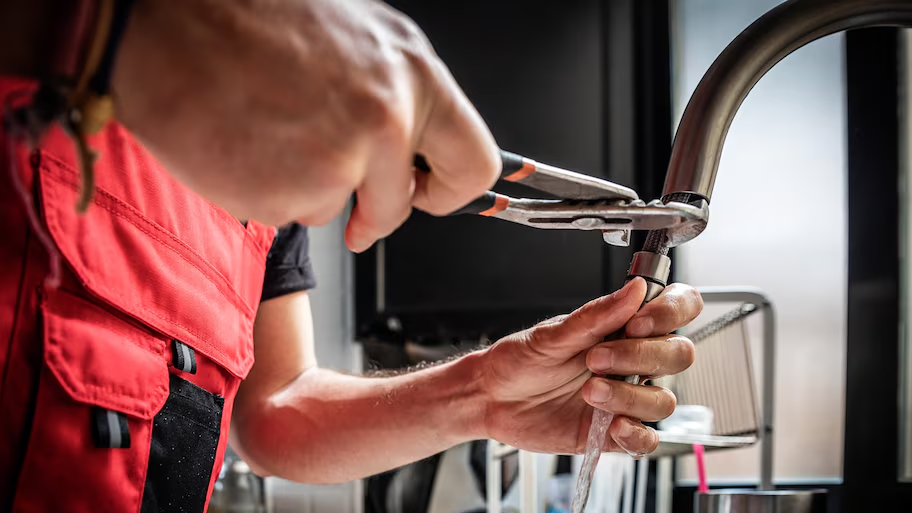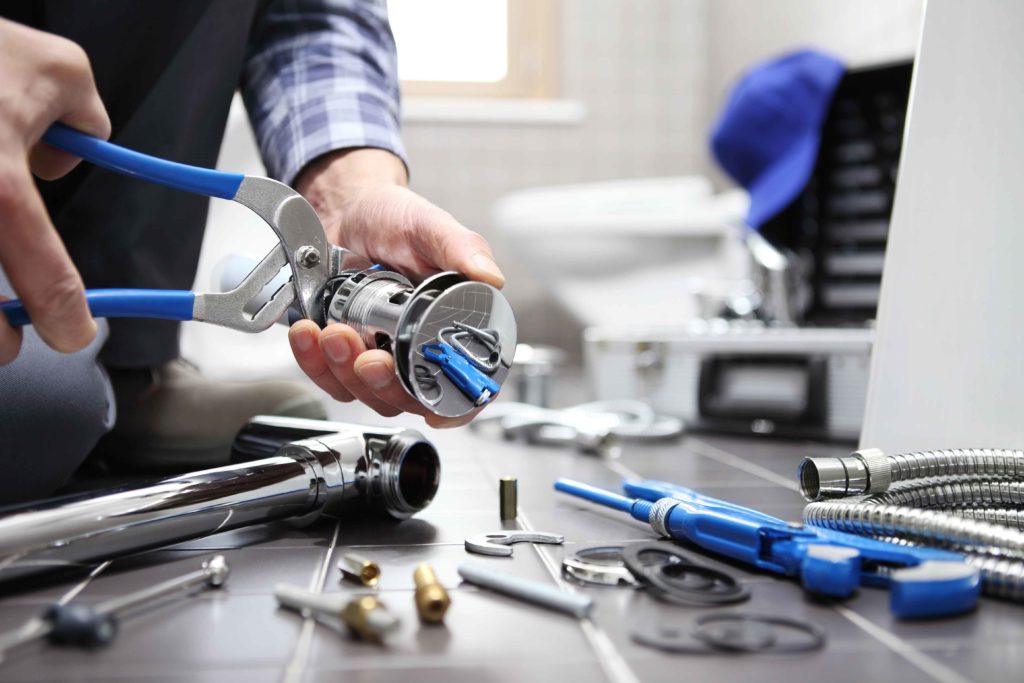Learning the Importance of Dealing with a Dripping Faucet
Learning the Importance of Dealing with a Dripping Faucet
Blog Article
The publisher is making a number of good pointers on the subject of Why Is It Important To Fix Your Leaking Tap/Faucet? in general in this post followed below.

Trickling faucets may look like a minor trouble, but their effect exceeds just the annoyance of the noise. From wasting water to sustaining unneeded economic expenses and health and wellness risks, overlooking a leaking faucet can lead to different consequences. In this write-up, we'll explore why it's essential to resolve this typical family issue immediately and properly.
Wastefulness of Water
Environmental Effect
Trickling faucets contribute significantly to water waste. According to the Environmental Protection Agency (EPA), a single tap trickling at one drip per secondly can waste more than 3,000 gallons of water annually. This not just pressures water sources yet additionally affects communities and wildlife depending on them.
Step-by-Step Overview to Fixing a Dripping Tap
Devices Called for
Prior to attempting to repair a leaking faucet, gather the necessary tools, consisting of an adjustable wrench, screwdrivers, substitute components (such as washers or cartridges), and plumber's tape.
Common Tap Issues and Their Solutions
Determine the type of tap and the certain issue creating the drip. Usual issues include damaged washers, rusty shutoff seats, or defective O-rings. Describe producer guidelines or on the internet tutorials for detailed assistance on repairs.
Financial Expenses
Raised Water Bills
Past the environmental effect, trickling taps can pump up water costs significantly. The collected waste over time converts right into higher energy expenditures, which might have been avoided with prompt repair work.
Prospective Building Damage
Moreover, long term dripping can bring about damage to components and surfaces bordering the faucet. Water buildup can cause discoloration, corrosion, and even architectural issues if left ignored, leading to added repair expenses.
Wellness Issues
Mold And Mildew and Mold Growth
The continuous existence of dampness from a dripping faucet produces a suitable setting for mold and mildew growth. These fungis not just endanger interior air quality but additionally pose health and wellness dangers, specifically for individuals with breathing problems or allergic reactions.
Waterborne Diseases
Stagnant water in leaking taps can become a breeding place for germs and various other pathogens, enhancing the danger of waterborne conditions. Impurities such as Legionella bacteria thrive in stagnant water, potentially resulting in severe illnesses when ingested or inhaled.
Do it yourself vs. Specialist Repair work
Pros and Cons of DIY Repair Service
While some might try to fix a leaking tap themselves, DIY fixings include their very own collection of difficulties. Without correct knowledge and devices, do it yourself attempts can aggravate the issue or cause insufficient repairs, extending the issue.
Advantages of Working With a Specialist Plumber
Working with a professional plumber guarantees that the underlying root cause of the leaking faucet is attended to efficiently. Plumbing technicians possess the knowledge and tools to detect and fix tap concerns effectively, conserving time and reducing the risk of more damages.
Environmental Obligation
Specific Contribution to Conservation
Taking duty for repairing leaking taps straightens with broader efforts towards water conservation and environmental sustainability. Every person's activities collectively make a considerable influence on maintaining precious sources.
Lasting Living Practices
By focusing on timely fixings and taking on water-saving behaviors, individuals contribute to sustainable living practices that benefit both existing and future generations.
Preventive Measures
Regular Upkeep Tips
To stop leaking taps, do routine upkeep such as cleaning aerators, examining for leaks, and changing worn-out components immediately. In addition, consider mounting water-saving tools or updating to extra effective fixtures.
Significance of Prompt Repair Works
Addressing dripping taps as soon as they're noticed prevents additional water wastage and possible damages, ultimately conserving both water and money in the future.
Effect On Residential Or Commercial Property Worth
Perception of Well-Maintained Building
Preserving a home in good condition, consisting of attending to upkeep issues like leaking faucets, improves its viewed value and value among prospective customers or lessees.
Impact on Resale Value
Qualities with well-kept plumbing fixtures, consisting of taps, command higher resale values in the property market. Attending to dripping taps can contribute to a positive impact during home inspections and settlements.
Verdict
Dealing with a leaking tap goes beyond simple comfort; it's a crucial action toward conserving water, minimizing economic costs, and protecting wellness and property. Whether with do it yourself repair work or expert aid, doing something about it to fix dripping faucets is a small yet impactful way to promote responsible stewardship of resources and contribute to a much healthier, extra sustainable future.
How to Fix a Leaky Faucet: Step-by-Step Repair Guide
A leaky faucet may seem like a simple annoyance, but if it's not fixed promptly, that leak could cost hundreds to potentially thousands. From water damage to mold, mildew, and high water bills, even a tiny leak can be catastrophic if left unattended. Damage like this can even affect the overall value of your home, so it's important to take the right approach for leaky faucet repair. You may need the help of a plumber in some cases, but we've got a few tips you can try on how to fix a leaky faucet before calling the pros.
Four Faucet Types
When you're learning how to fix a leaky faucet, the first step is knowing what kind of faucet you're working with! There are four common types.
Cartridge Faucets
Cartridge faucets come in one- or two-handled varieties. In one-handled cartridge faucets, hot and cold water combines in a single cartridge. In the two-handled versions, hot and cold water are controlled separately and mixed in the faucet.
Ball Faucets
Ball faucets have a single lever you push up and down to adjust the pressure and rotate to change the temperature. A slotted metal ball controls the amount of water allowed into the spout.
Compression Washer Faucets
They're the oldest type of faucet, but they're still used in many homes — especially older ones. Compression faucets have two separate handles that, when turned, raise or lower the washer that seals a water valve. This valve stops water from flowing through the faucet when it is turned off.
Disc Faucets
Disc faucets rarely need to be repaired due to their maintenance-free design. The water flow is controlled by two discs — the upper one raises and lowers against a fixed lower disc, creating a watertight seal. If your disc faucet starts leaking, you may need to replace the seals or clean residue buildup from the inlets.
Fixing a Leaky Faucet
Step 1: Turn Off the Water
Whether you're learning how to fix a leaky bathtub faucet or how to fix a leaky kitchen faucet, always turn off the water supply to your working area when you're fixing a leak. The last thing you want is a flood added to your list of things to fix.
Look for the shutoff valves below your sink or around the tub and turn them clockwise to stop the water flow. If your faucet doesn't have shutoff valves, you may need to turn off the water for the whole house. Check to make sure it's off by turning the faucet on. If nothing comes out, you're ready to start the repair.
Step 2: Take Apart the Faucet
How you disassemble your faucet depends on the type of fixture you have. You can use a flathead screwdriver to remove the caps on top of the handle or handles for cartridge and compression faucets. Inside, you should see handle screws. Unscrew these with a screwdriver to remove the handle.
Disc- and ball-style faucets will typically have an inlet screw near the handle, and removing that will reveal the interior of the faucet.
Detach the Valve Stem
For cartridge- and compression-style faucets, you'll see the inner valve stem or cartridge once you remove the faucet handles. If you have a compression faucet, unscrew the brass valve stem. If you have a cartridge faucet, pull out the cartridge. If your cartridge has been in place for a while, it may require some tools or extra force to remove it due to mineral deposits.
Examine and Replace Parts
Once you've removed the parts, check them out to confirm what needs to be replaced. You may see corroded rubber washers, O-rings, stems, or cartridges. On a ball-style faucet, check the seats and springs for damage.
If you need to repair a leaky disc faucet, check the inlet and seals on the lower disc.
Once you determine what parts must be replaced, visit your local hardware store. Bring the damaged parts with you to ensure you can purchase the correct components to replace them.
Clean Valves and Faucet Cavity
If you've removed a stem or cartridge, you may notice mineral buildup in the faucet's threads. Use white vinegar to clean the valve seat by soaking it for a few minutes, then scrub it away with a soft toothbrush and rinse with warm water. You can also clean the interior of the faucet in the same way.
Reassemble the Faucet
Once your faucet is cleaned and the required parts have been replaced, it's time to reassemble it. Put the pieces back together and slowly turn the water supply back on. Doing this slowly is crucial because too much initial water pressure can damage the new hardware you've just installed.
https://homewarranty.firstam.com/blog/how-to-fix-leaky-faucet

As a passionate reader on Leaky Faucets: Why They Happen & What to Do About Them, I think sharing that post was sensible. Do you know another individual who is enthusiastic about the subject? Take a moment to share it. Thank-you for taking the time to read it.
Report this page